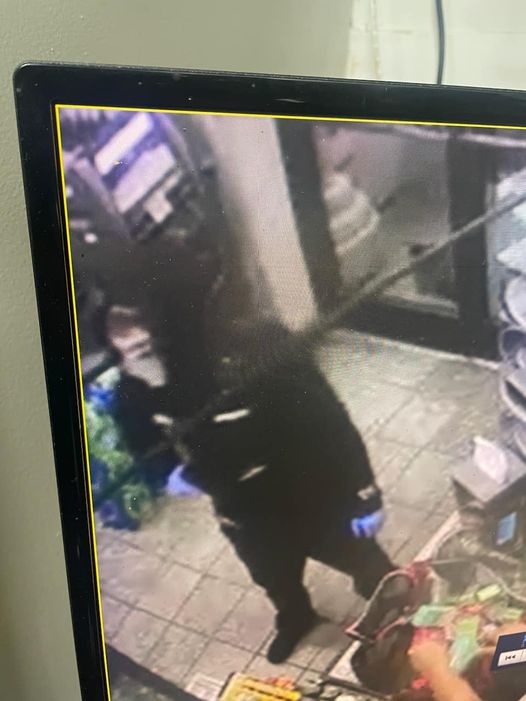Have you noticed tiny black ants coming into your home over the last couple weeks? At this time of year, you more than likely are dealing with the Odorous House Ant. Odorous House Ants (OHAs) are small, about 1/8-inch long, dark brown to black, and smell like rotten coconuts with a hint of other odors when crushed (Vail, Chandler). They lack a stinger but may bite if you aggressively provoke their nest. Typically they forage outside, but they will come indoors if it’s too cold outside, if there’s an increase in rain, and/or if a desirable food or water source is present. The best way to rid your home of these pests is to eliminate the colony. This is achieved by having the workers take bait back to their nest which will eventually kill the colony.
Unlike other ant species, theses ants are opportunistic nesters and don’t nest underground. Outdoors, nests can be found under or near logs, stones, structural siding, pine straw and leaves, bee hives, dog houses, and iris rhizomes, to name a few. Indoors, nests can be found near food and moisture sources, such as beneath carpet and toilet edges, garbage cans, cabinets, or drawers. If left untreated, you could find your home infested with these tiny invaders. Below are some tips on how to manage these pests:
1. Correctly ID the ant—Make sure you’re dealing with OHAs so you can treat for them.
2. Remove as many conducive conditions for OHAs as possible—food, water, and shelter within 10ft of the home should be considered and removed, if possible.
•Outdoor Examples: pine & leaf litter near siding, stacked firewood, outdoor pet bowls and open dog food containers, garbage cans close to the house, tree limbs touching the house, etc. Also, consider planting nectar-producing plants away from the house.
•Indoor Examples: Clean all spills promptly, clean out honey jars, remove trash promptly, seal pipe penetrations, fix leaks quickly, and store food properly. Wipe foraging trails with soapy water to remove the pheromone-trails the ants are following.
3. Find the nests & bait areas of activity—treating indoors alone will temporarily eliminate the symptom of a larger issue. It’s important to treat your exterior as well. In order to do that, place index cards with a little bit of honey every 10-20 ft around the base of the house. Check the cards after 40 minutes and count the number of ants. If more than 10 OHAs are found per card, bait those areas. Liquid baits work best as they transfer easily throughout the colonies. You can also place a gel bait in stations around the house. ALWAYS follow the bait label and directions. Make sure to use a sweet gel or protein bait for OHAs rather than oil-based ones, as OHAs don’t feed on plant oils. Avoid fast acting sprays, such as pyrethroids, to avoid killing workers before they can transfer the bait back to the colony. Once baits are placed, do not wipe away ant trails or disturb ants foraging on the baits! You want them to solely feed on those bait sources. You will likely see an increase in ant activity. Fight the urge to eliminate them on sight. Remember the goal is to get them to carry the bait back to the colony! Monitor your bait stations to make sure they stay full.
4. Treat the nest if you can locate it.
5. Treat perimeter, entryways, and area of activity—there are products on the market you can use to treat your exterior, but be sure to read your label carefully to ensure it treats your target and to avoid misapplying the pesticide. It may be best to utilize a pesticide professional to spray the exterior of your home. Avoid using exterior sprays as well as fast-acting insecticides to cracks and crevices as sole treatments. Exterior sprays alone will control the exterior populations relatively well, but the indoor populations will slowly be affected. Interior sprays alone will have little effect on outdoor populations and may actually prolong indoor activity.
6. Combine all of the above! Integrated Pest Management relies on multiple means of control, and doing so for OHAs will be highly effective. Here are some great examples from UT’s publication W473 on Odorous House Ants: Combine slow-acting exterior treatment (e.g. fipronil) with exterior bait stations, or apply a slow-acting spray (e.g. chlorfenapyr) to interior cracks and crevices with an exterior perimeter treatment with a slow acting spray (e.g. fipronil).
If you find you need further assistance identifying these ants and/or controlling them, please feel free to contact me by phone at 931-722-3229 or by e-mail at [email protected].
Information contained in this article has been adapted from UT Publication W473: Vail, K. and Chandler, J. Odorous House Ants: The Most Common House-Invading Ant in Tennessee.







